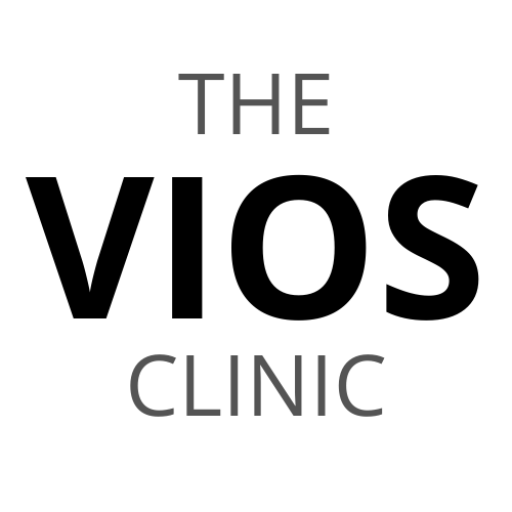
No one doubts that healthcare technologies are poised to grow even more in 2022. Top healthcare software development companies offer a defined omnichannel approach to patient care and drive the pace of change in the healthcare industry. What’s more, healthcare providers of all shapes and sizes are searching for uncommon solutions.
What is going on in the health technologies market?
Back when the global pandemic started, many considered remote healthcare as just a time trend. Some have even doubted that technology had the power to achieve such awe-inspiring results.
Now, a couple of years later, tech integrates with almost every healthcare sector, from medical billing to self-care and everything in between. People start to accept digital health care as a given and wonder what comes next.
The digital revolution in healthcare continues to seize the moment. According to an analysis by Global Market Insights, the digital health market size reached USD 84.08 Billion in 2019 and is expected to reach USD 220.94 Billion by 2026. Side note, сompare these numbers to 2016 when the digital health market size was valued at USD 18,79 Billion.
The above-mentioned statistics show the significant growth of the global digital health market size. This is a fertile ground for companies that are concentrated on healthcare software development.
Top 4 emerging healthcare software areas
In the coming year, the health industry lived hoping for the best but preparing for the worst. Healthtech couldn’t just stand aside. Despite all the notorious pandemic hurdles, developers reached out to medical workers, offered new services, and grew. The major trends of 2021 were:
AI-driven applications
Preventive care has reached a new level with artificial intelligence. Physicians diagnose illnesses more with better precision and can take timely actions. Moreover, big data is used to analyze enormous amounts of patient data and detect the patterns of diseases.
IoMT (Internet of Medical Things)
Health monitoring devices and wellness apps are proliferating and will keep gaining popularity in 2022. They are making a big difference to fight chronic diseases. Wearables encourage people to be in control of their condition and make well-informed decisions.
Sustained innovations in nanomedicine
The recent use of nanomedicine in healthcare influences treatment methods a lot. It slowly becomes irreplaceable for the prevention, diagnosis, and treatment of diseases. Nanotechnology usually describes highly specific medical interventions, for example, in a wide variety of cancers and tumors.
Ubiquitous adoption of telehealth
This technology is predicted to replace in-house appointments and ongoing treatment control. More and more health organizations offer patients to receive care or prescription refills via telemedicine platforms. This is possible by enabling a wide range of digital services that lower the pressure on the already overburdened hospitals.
What moves the healthtech business?
There are several key factors that push the business leaders of healthtech service providers to review their business strategy solutions. Since the overall situation on the market stimulates faster decision-making, they have to remain seized of the matter.
Greater influence of consumers
User experience influences changes in technologies, and healthtech is not an exception. Apart from the treatment plans, healthcare providers must take into account patients’ needs and perceptions of value as well. Susan Collins, Twilio’s global head of healthcare, noted: “Patients expect their experiences to be personalized and tailored to their preferences and prior interactions.”
Health organizations sometimes didn’t ensure fully patient-oriented care, but the business outcomes of this approach are significant enough. The health industry is becoming more person-centered and transparent for all involved. It results in improved and more trusting doctor-patient relationships.
Healthcare software innovations
The healthcare provider solutions segment holds the largest market share in 2020. The most important destination for action is reducing medical errors. Healthtech developers also strive to contain the growing healthcare costs and improve the efficiency of healthcare services by implementing modern technologies.
“The technology, when used in hospitals, will help scale the work of nurses on the front lines, increase operational efficiency, and provide virtual patient monitoring to predict and prevent adverse patient events”, said Kimberly Powell, vice president at NVIDIA Healthcare. With that said, healthcare software development will continue to grow.
Legal reforms
Healthcare is one of the most stringently regulated industries, and this will remain unchanged. As there are new technologies emerging, rules and regulations will continue to be drafted. Credentialing and licensure requirements still remain a serious barrier for many medical workers.
However, unstable policies and government priorities in world markets lead to discontent among citizens. This, as one might expect, causes consequences with active experiments in the legislative field.
Future perspectives for the Healthtech market
As healthcare providers widen the use of mobile apps and cloud-based platforms, they are reaching out to more patients without sacrificing the quality of care. Electronic health records systems undertake an increasing proportion of document flow. Moreover, patients take more responsibility for their drug therapies because they watch over their condition via mHealth apps.
The advancements in healthcare technologies can grow to have large effects on Healthtech companies’ business solutions. By way of example, these could include investment strategy, development direction or As for health providers, new technologies in healthcare play a crucial role in preventing misdiagnosis, avoiding unnecessary surgeries, and sustaining health.
Conclusion
There’s so much to care about when it comes to the future of Healthtech! For companies seeking to stay relevant in the market, upgrading their current tech stack is a must.
In addition, it’s important to remember that not every technology will be suitable for a particular hospital or clinic. A well-designed roadmap and comprehensive market research are the key steps of digital transformation in healthcare.
To reach success, healthtech companies should stick to a long-term healthcare industry objective. It combines sharpening out technologies alongside cutting healthcare costs and improving patient care.
BLOG AUTHOR
Timothy Partasevitch
Chief Growth Officer at Smart IT
Tim is a sales and marketing specialist, who solves business challenges like an engineer by focusing on data insights, analyzing what works, what doesn’t, and what can be improved from a technical and financial perspective. Over the years he has supported the transformation of new clients into long-term partners and expanded services provided in the work space, ultimately facilitating revenue generation and business success. Tim strongly believes that you can’t be in charge of the outcome and results. However, you are 100% in charge of the input.





0 Comments